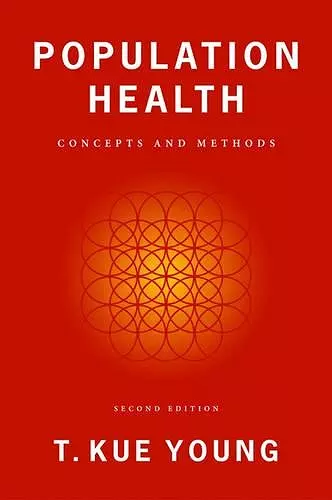Population Health
Concepts and methods
Format:Hardback
Publisher:Oxford University Press Inc
Published:28th Oct '04
Currently unavailable, and unfortunately no date known when it will be back

This beautifully crafted textbook fills a long-empty niche in public health training. - Chronic Diseases in Canada
This text has a strong base in epidemiology and is organized around the logical sequence of studying and attempting to improve the health of populations. The second edition incorporates many new topics that reflect changes in contemporary public health concerns, such as emergent infections and bioterrorism.Population health encompasses traditional public health and preventive medicine but emphasizes the full range of health determinants affecting the entire population rather than only ill or high-risk individuals. The population health approach integrates the social and biological, the quantitative and qualitative, recognizing the importance of social and cultural factors in practice and research. This text is organized around the logical sequence of studying and attempting to improve the health of populations; measuring health status and disease burden, identifying and modelling health determinants, assessing health risks and inferring causation, designing research studies, planning interventions, and evaluating health programs. The second edition incorporates many new topics that reflect changes in contemporary public health concerns and our response to them; as well as shifts in research directions. These include lifecourse approaches to health, gene-environment interactions, emergent infections, and bioterrorism. Among the specific changes are new or expanded discussions of confidence intervals for commonly used rates, the impact of population ageing on mortality trends, health survey questionnaires, summary measures of population health, the new International Classification of Functioning, Disability and Health, migrant studies, race and ethnicity, psychoneuroendocrine pathways, social epidemiology, risk perception, communicating the SARS epidemic, ecologic studies, the odds radio, participatory research, suicide, evidence-based community interventions, evaluation methods and health economics, the Cochrane Collaboration, and systemic reviews. The many positive features of the first edition have been retained, such as the extensive use of boxes, case studies, and exercises; the selection of examples representing a variety of health problems, geographic regions, and historical periods; and a multidisciplinary orientation bridging the quantitative and qualitative, the social and biomedical sciences. The book aims to spark a new kind of broad-based training for researchers and practitioners of population health.
From reviews of the first edition:
This beautifully crafted textbook fills a long-empty niche in public health training. It provides between one set of covers a comprehensive introduction to all the quantitative methods for the assessment of population health status that the average health professional needs to know... The whole effect is very refreshing and holistic - this is a book that can really be used to give a broad... picture of how we know what we do about the health of populations... Another great strength of this book is the rich, up-to-date examples of all the main ideas presented. * Chronic Diseases in Canada *
This text fills a significant need for public health students and practitioners alike... In accomplishing its primary purpose, this book brings epidemiology to life while arming current and future public health professionals with tools and skills to measure and improve the health of populations. * Choice *
ISBN: 9780195158540
Dimensions: 164mm x 245mm x 28mm
Weight: 712g
403 pages
2nd Revised edition